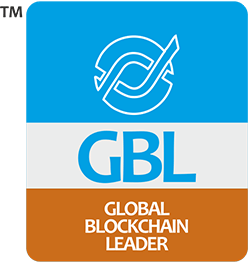May 08, 2019

The online transactions world went gaga when bitcoin introduced ‘the super-efficient’ Blockchain to it. Sprinkled over the tried and tested sweet recipe of delectable bitcoins, blockchain created a hype that went much beyond a simple buzz. Transparent, cheap, quick, decentralized - Seek and Ye shall find it with Blockchain. Or so it seemed.
In its euphoric delight, the business world jumped in the adorned wagon and launched 80,000 blockchain projects anon and abrupt. More than 90% of these couldn’t survive their infancy. When the dust surrounding frenzy and commotion settled, it appeared that on an average a blockchain project survived for 1.22 years.
Certainly not something we can boast about.
Don’t get us wrong here. We absolutely root for blockchain’s performance and potential. But there is work that needs to be done before we eulogize this blossoming stream as the absolute ticket to transaction utopia. Come to think of it - how easy it would be to implement a unified and uniform technology in a world that is divided in terms of boundaries, laws, cultures, systems and expectations?
While on one hand, in a short span of little more than a decade, the technology has managed to spread to the remotest of countries, on the other, it has reached a bottleneck when it comes to its expansion in terms of performance, technology and legal compliance. Let’s take a bird’s eye view of the improvement areas:
Changes in Smart Contracts:
In 2016, an unplanned code path allowed users to extract funds from Ethereum. One user was able to withdraw USD 50 million. Ethereum had to be hard forked after the incidence and disagreements within the community led to the diversion of Ethereum in Ethereum and Ethereum Classic. Internationally, there is no legit way to incorporate modifications in the code.
Smart contracts haven’t reached the kind of maturity wherein they can be relied on as the final word. On one hand, immutability is the core strength of the technology and helps in building trust, on the other, getting the smart contracts foolproof and right the first time remains a task yet to be mastered. Until then, international adoption of Blockchain would necessitate a flexible law wherein necessary changes in smart contracts do not become legally noncompliant.
Standardization of Blockchain:
Blockchain operations are isolated and there are no universal standards that connect them. To gain advantage of DLTs it is important to establish a collaboration that covers different industries. Absence of these standards poses security, privacy, customer lock-ins and various other risks. ISO Technical Committee 307 and ITU’s standardization sector ITU-T are making efforts to standardize Blockchain operations.
Reliance on Developer Community:
The present model of blockchain places high trust on the community of developers and managers running the project. In order to be more reliable, the networks themselves need to be more resilient.
User Responsibility:
Public Blockchains like Bitcoin do not have a central authority. In case of any mishappening like lost or stolen account key, the user cannot approach anyone. There is no provision to restore forgotten passwords and usernames. Once the information is posted it is difficult to alter it.
Data Threat:
DLT’s “never to forget” orientation is in direct contrast to the EU GDPR’s “right to forget”. Blockchain’s permissionless open identification raises crucial security concerns with reference to anti-money laundering and know your customer activities. Provisions should be made to make the data secure.
Disconnected Global Operations:
Many countries including China, Saudi Arabia and Bangladesh have put their own regulations on cryptocurrency trading. Few others are yet to decide its incorporation in their systems. An international framework framing the nature and extent of cooperation among international authorities is required.
Operational Inadequacies:
Public blockchains have slow transaction speed. With the international spread, more data storage will be required which can further retard their speed. Attaining economies of scale here remains a big question.
Code Complexity:
Blockchain has found meaningful uses in an array of industries. However, few middlemen can interpret and explain the code to the common user. The code needs to be simplified so more users can use it.
Increased Costs:
Adoption of blockchain comes with financial and organizational costs. Efforts should be made to reduce this cost so that the technology becomes suitable for SMEs.
Malicious Entities:
Though blockchain is conceptualized to keep a check on unwanted entities, the system is yet to become completely immune to them. There have been cases wherein such entities or users had gained control and have harmed the system. Though theoretically tamper-proof, in recent past, blockchain has witnessed attacks that have ranged from malware, phishing, implementation vulnerabilities, legacy attacks, cryptojacking etc. For international application, the system has to be made leak-proof against these threats.
Parting Words
The authenticity and applicability of blockchain are uncontested. Initially, taken a just another passing fad, it has now come to be a favorite of the transactions world. And why not? It has extended solutions to problems that earlier appeared to be unsolvable. It is just a matter of time for this technology to address these impediments and introduce the world to a never-seen, never-heard transactions utopia. With blockchain, it is certainly possible!









